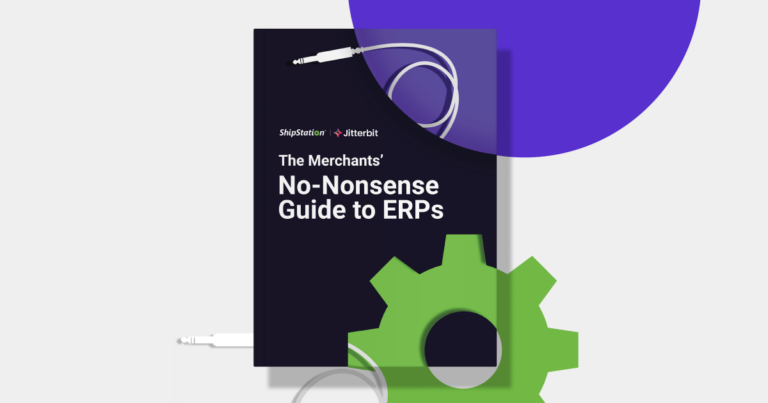Everything You Need To Know Before Replatforming & Migrating Your Ecommerce Shop

This blog was contributed by Marco De Paulis and E.M. Ricchini of Noticed, an ecommerce agency leading fearless brands to limitless growth. Taking a specialist approach, Noticed offers high-touch ecommerce builds and migrations, ongoing optimization, and growth marketing strategy and management.

We think website migrations—particularly those of the ecommerce variety and especially when it comes to replatforming—get a bad reputation. Sure, considering issues such as content and SEO can be nerve-racking, but planning for a migration can also provide plenty of opportunities to reassess, re-prioritize, and start fresh.
Whether you’re in the beginning stages of thinking about migrating your ecommerce website or actively searching for an agency partner to make it happen, there are three important questions that you should be asking:
- What do I need?
- What do my customers need?
- What powers my business?
Ideally, such a huge change would be one that plays on your ecommerce business’s strengths and places the strongest tenets of your brand’s ethos at the forefront. After all, if you’ve been in business a while, you’ve probably seen your company evolve—so what about your ecommerce shop, which is, in a lot of ways, the face of your company? Different platforms fit different brands. So before narrowing down your options for replatforming, you should consider what you want and need out of your site, and also what your customers want and need. The problem is, how do you find the answers to these questions? We can serve as a guide, but we’ll leave the soul-searching up to you.
Separate Back And Front End Features

Before you decide which platform you’re going to replatform to or what the scope of the migration will be, the first step is determining all of the pieces that make your site whole. The simplest way to do this is by looking at your website (or your ideal website) as two parts: The back and the front end.
Backend covers components such as inventory, shipping & fulfillment, and content management as well as unseen features like point of sale (POS) and hosting & content delivery network (CDN). Depending on the platform, you may also need to plan on having a team or resource for upgrades, server management, and security patches. (In the case of open source, such as Magento.)
On the other hand, frontend starts with the feel of the site and how it caters to different tiers of users, (wholesale, VIP) how it supports the size of a catalog and their attribute requirements, how well the site renders on mobile, how customizable is the frontend from a design and content perspective, and what third-party applications (search, personalization, advanced search, etc.) are available to integrate.
It’s important to take stock of how your current site works; from integrations to design. Migrations are a good time to double down on what’s working and to reconsider what’s not. Keep what’s trending in your industry in mind: for example, if a cloud-based multi-channel approach works well for others in your competitive landscape, switching to Shopify or Shopify Plus from a legacy platform may be the move for you. This is a good time to shop around for third-party solutions. Consider pain points from the customer journey perspective, and what happens after a purchase is made.
Make a list of these critical features and align them with the overall customer experience to determine which functionality your ecommerce site will need to provide shoppers with a smooth, seamless experience from first touch point all the way through to delivery and on.
Audit Your Content
Is there any task that seems as unfortunate and tedious than conducting a content audit? While there are definitely a few, we don’t even want to think about them, because audits can be pretty arduous. However, you can’t plan for better content or commit to a new content management system without knowing what you’re up against, which is why a content audit is an integral point of any migration.
Look at the site through as objective a pair of eyes as you can. Whether you need to enlist the help of a friend or a new employee, or you can get into the mindset of a customer, shifting the perspective will help you determine what should stay and what should go. Is there copy that needs to be reworked, or lifestyle images that could tell your brand’s story more effectively? Does your product imagery leave a lot to be desired? If you’re investing the time and resources in a migration, it’s important to make sure that the content on the site will facilitate a positive customer journey, which will go a long way towards ensuring a lift in metrics once you flip that proverbial switch.
While you may be ready for a new website right away, if you can afford to, take your time when looking through your website. As yourself some of these questions as you pore through the pages:
- Is the content complementary to my brand?
- Is the UX complementary to the content?
- What does a particular feature add to the overall experience—or take away from it?
- What does it seem like my ecommerce store is missing?
If you’ve determined that all of your content needs an update and are feeling overwhelmed by the idea of hiring a photographer, re-shooting all of your product imagery, finding a copywriter, updating all of your product descriptions, and more on top of the migration, fret not. If you’re on the right platform, content management will be something you can do on your own and build up over time. Before launch, prioritize these tasks. While you want to make a good first impression, getting all the content on the page to be perfect is unnecessary. After all, your content will likely change to accommodate new seasons, new products, or both. Make a goal of constantly updating and improving your content rather than doing it all at once.
What about the data?

Once you’ve decided on a plan for all of your content, you need to then map out where and how your customer data, order history, and product data is stored. Where that data lives is important, and how you treat it can affect your future site, your analytics, and the overall customer experience. Is it going to stay in the same inventory system or ERP, or does it need to move to a new system? And, of course, what begs the question, what will this new system be?
Having an agency partner is important—even for these early steps—because having an expert in your corner to answer these often difficult questions can take a lot of the pressure off. The right partner can say with confidence that they’ve done this dozens of times, and they know what to look for and are well-versed in the best practices that yield positive results time after time. A well-connected agency knows the ecommerce ecosystem well, and can recommend the best and most innovative solutions.
Data migrations are, by nature, quite technical and are very difficult—yet critical—so it’s important to have this plan nailed down with a team who can execute properly. When finding a partner, look for someone with a proven track record of successful data migrations.
Test, Test, Analyze
In addition to conducting your own audit of the site’s content and information architecture, just before a migration is a good time to analyze user sessions—if you haven’t already. How shoppers interact with your website and content, how they navigate from page to page and hopefully all the way through to the checkout (and confirmation) can reveal a lot about your shop. There are, of course, ways to direct users through the funnel, but if they’re straying from the desired path, that’s something to consider when making changes.
Have An SEO Plan
And here it is: perhaps the most dreaded piece of migrating. When it comes to search engines, is your visibility—and therefore, traffic—going to drop off? Will it ever get back to a good place? Search engines are shrouded in mystery in terms of how they work and how the rankings are determined, but you can plan ahead to mitigate any lasting consequences of a migration.
The best way to ensure that your migration project isn’t doomed from the start is to have a plan and process in place. The first step towards determining that process is, you guessed it, asking more questions.
- Is every team member with access to the project (SEO team, copywriters, developers) privy to the process that will be put into place?
- How are you preparing for potential redirects?
- Is the site leveraging every opportunity it can to add relevant content to boost SEO?
- Is there a plan to monitor this after the switch is flipped?
- Is Google Analytics properly set up to monitor my traffic for my new site?
- What are my top keywords I can benchmark for future analysis?
Make It Long-Term

In addition to preparing for potential SEO implications, having a post-launch process and plan in place before flipping the switch will go a long way towards keeping up the momentum of the migration. Sticking to a long-term plan can make sure your new site will continue doing its part to increase your revenue and profitability.
Depending on the infrastructure of the website, you’ll want to make sure you have priorities and resources dedicated to ongoing development, site optimization, and—if you opted for open source—a relationship or team to handle security patches and site or extension updates at the ready. Bugs aren’t uncommon and changes are inevitable, so having a plan in place when something needs to be fixed or updated will keep you ahead of the curve.
If the scope of this work is too much to keep it all in-house, it’s important to pick an ecommerce agency partner invested in your long-term success. Not only should they make a point of leveraging their experience, but also their continued relationship with technology and platforms in the ecommerce ecosystem. Staying up-to-date with the latest innovations and adjusting to trends can translate to continued success for your ecommerce venture.
Once you break them down into actionable steps, replatforming and migration don’t seem so scary, do they? If there’s one sentiment from this article that sticks with you, it should be this: plans and processes—and having them in place from the time you begin planning, to the moment you flip the switch and well into the future—will provide the roadmap to point your ecommerce business towards long-term success.
ShipStation is excited to welcome Noticed as our newest partner. Learn more about the  Partnership.
Partnership.



